


ORGANS OF PARIS © 2024 Vincent Hildebrandt HOME ALL ORGANS

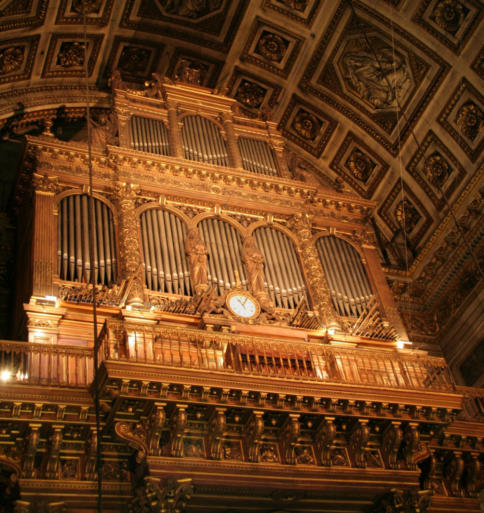

The construction La Madeleine started in 1764
according to a design by architect Pierre Constant
d'Ivry, similar to that of the Invalides church. When he
died in 1777 his successor, Guillome-Martin Couture,
started with a new design, based on the Panthéon. In
1806, Napoleon decided to build a temple in honor of
his army on this place and he appointed Pierre-
Alexandre Vignon who started with a new design again:
a temple based on the 'Maison Carrée', an ancient
Roman temple in the French city of Nîmes. With the
construction of the Arc de Triomphe, which honored
the French Army, the new temple was looking for a new
function. After the fall of Napoleon King Louis XVIII
determined that it would be used as a church
dedicated to Mary Magdalene. The July Monarchy
rededicated as a monument of national reconciliation,
and the nave was vaulted in 1831. In 1837 it was briefly
suggested that the building might best be utilized as a
train station, but the building was finally consecrated as
a church in 1842.
The Madeleine is built in the Neo-Classical style. 52
Corinthian columns surround the temple, each of them
twenty meter high. The pediment sculpture of the Last
Judgement is by Lemaire, and the church's bronze
doors bear reliefs representing the Ten
Commandments. The temple's facade acts as a great
architectural counterbalance to the colonnaded facade
of thePalais Bourbon across the river.
Inside, the church has a single nave with three domes
over wide arched bays, lavishly gilded in a decor
inspired as much by Roman baths as by Renaissance
artists. At the rear of the church, above the high altar,
stands a statue by Charles Marochetti depicting St Mary
Magdalene being lifted up by angels which evokes the
tradition concerning ectasy which she entered in her
daily prayer while in seclusion. The half-dome above
the altar is frescoed by Jules-Claude Ziegler, entitledThe
History of Christianity, showing the key figures in the
Christian religion with — a sign of its Second Empire
date — Napoleon occupying centre stage.

C3
The Great Organ was completed in 1846, but the plaque of
the console reads: "Cavaillé-Coll Père et Fils, facteur d'orgues
du Roi, 1845". At that time, Dominique and his son Aristide
Cavaillé-Coll were still partners. The two builders had just
completed the great organ of Saint-Denis, and the
instrument of the Madeleine was one of the first instruments
built in the capital. At that time, the organ had 4 keyboards
and 46 stops. The entire piping was enclosed in a single case,
removing the notion of the contrast between Positif and
Grand-Orgue.
1927
The instrument remained intact until 1927, when Mutin
performed an overhaul, removed Bourdon 8 and Octavin
from the Récit to place a Gambe and a Celeste.
1956-1957
Overhaul and extension by 6 stops by Ets Roethinger (work
directed by R. Boisseau):
•
Installation on the Bombarde of a Fourniture IV ranks and
a Cornet III ranks on the upper board of the 2nd Trumpet
of Cavaillé-Coll.
•
ransformation of said Trumpet into Bombarde 16, by
shift.
•
Added a Prestant 4 and a new Cymbal to the Swell .
1970-1971
Restoration by Danion-Gonzalez:
•
Removal of Barker machines (deposited at the Musée du
Conservatoire).
•
Electrification of note drawing and stops (direct electric
traction for G-O, Bomb. and Pos, electro-pneumatic for
Pedal and Swell),
•
New console. with extension of manual keyboards to 56
notes. 32-note pedalboard.
•
New windchests for Pedal and Swell,
•
Change of composition:
•
At the G-O: addition of Piccolo 1 and Cornet V ranks,
•
At the Swell: suppression of the Gambe and the Celeste
of Mutin to place a Bourdon 8 and a Larigot 1 1/3
•
At the Pedal: New Flute 4;
•
Harmonization by J.-M. Cicchero.
1983
Repair of all the wind supply by Gonzalez.
1988*
Dargassies has restored stops transformed or added in 1970:
their sound did not correspond to anything:
RE Plein Jeu too thin, Octavin 2 replacing a Doublette 2,
BO: Octavian flute 4 which had been cut in 1955,
GO Piccolo 1 added in 1970 far too skinny, Cornet GO
enlarged and moved.
As early as 1970, the traction of the PE and RE notes was
electropneumatic. However, the GO, PO, and BO had direct
electric traction. The sensitivity was very bad, so in 1986 it
was replaced by electro-pneumatic machines.
2001-2002
Dargassies added the two stops en chamade that had been
planned by Cavaillé-Coll.
2008
At the Récit, there was only one windchest, and the pipes
were packed and difficult to tune. In 2008, Dargassies split it
in two and put a walkway between it. The stops sound much
better and are more easy to tune.
This organ has 46 stops out of the original 48, i.e. nearly 95% of
the original sound material from 1846. The wind chests are by
Cavaillé-Coll with the exception of those of the Pedal and the
Swell, which are by Gonzalez.
In this organ is the first set of Voix Céleste installed in the world.
*a big thank you to Mr Bernard Dargassies for this information.

Organiste titulaire
François-Henri Houbart
Olivier Périn (titulaire adjoint)
Organiste suppléant: Jean-Louis Vieille-Girardet
Famous organists in the past: Fessy, Lefébure-Wély, Saint-
Saëns, Dubois, Fauré, Dallier, Mignan, Jeanne Demessieux,
Odile Pierre.
Concerts
Monthly on Sunday 4PM
Masses with organ
Saturday 6PM, Sunday 10h30AM, 6PM;
Videos
François-Henri Houbart
Hendrik Burkard
Audio (Festivo)
Jeanne Demessieux (Franck)
Jeanne Demessieux
Jeanne Demessieux
Photo GO: Jeroen de Haan
Other photos: Victor Weller & facebook
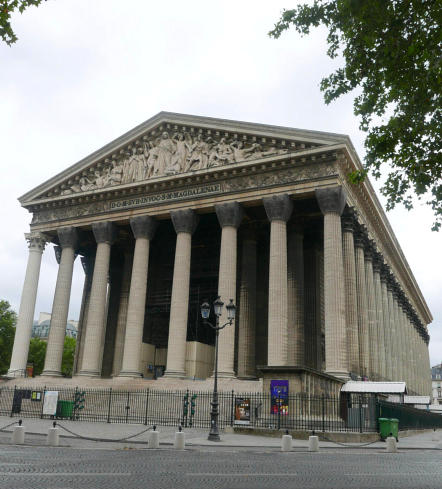
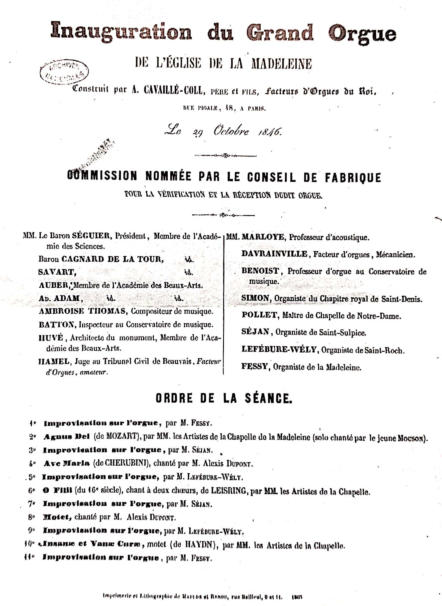
1846 - Cavaillé-Coll (1)
1927 - Mutin (5)
1957 - Roethinger-Boisseau (2)
1971 - Danion-Gonzalez (3a)
1983 - Gonzalez (5)
1988 - Dargassies (5)
2002 - Dargassies (2)
2008 - Dargassies (6)
III/60 - traction électrique
composition
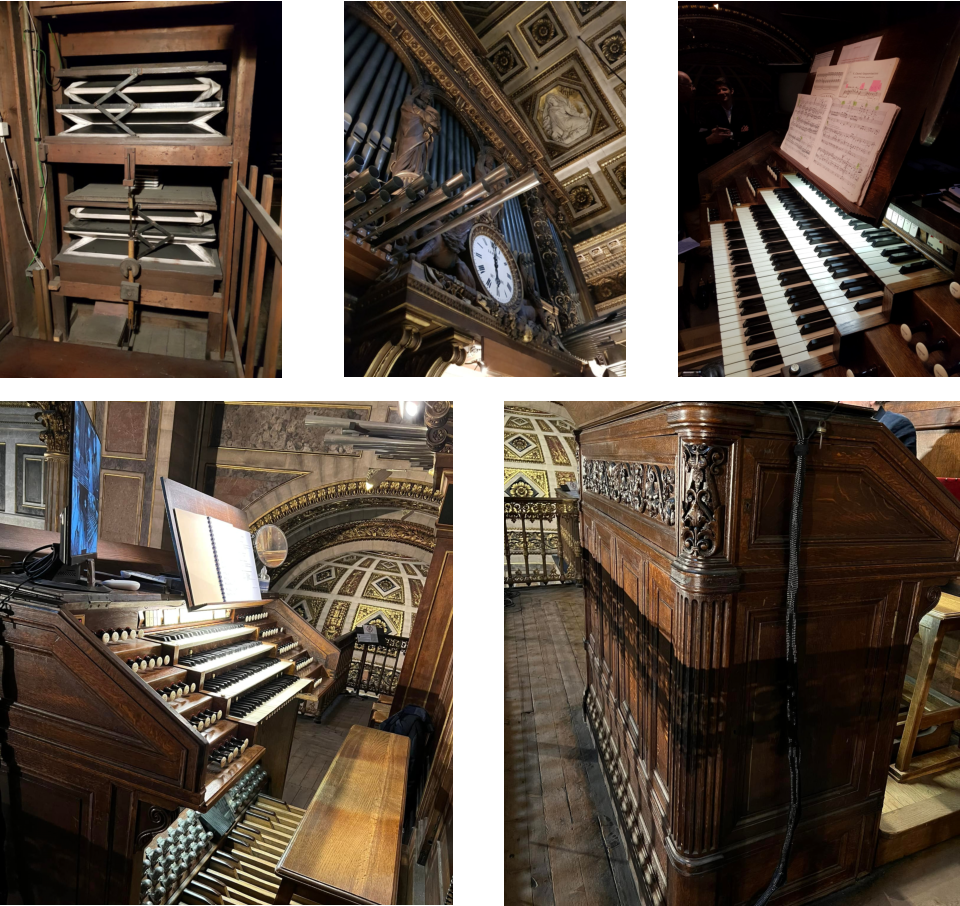
The organs of Paris
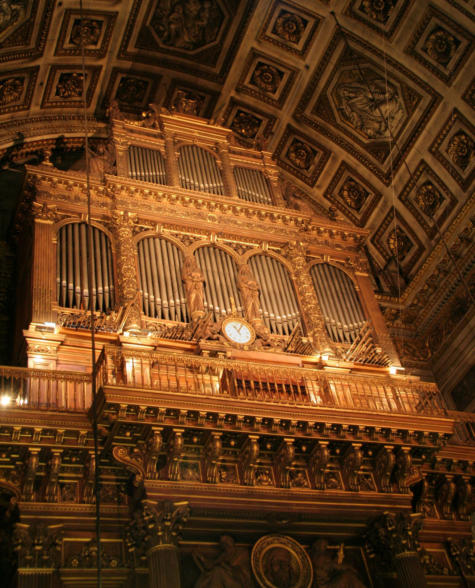
ORGANS OF PARIS © 2024 Vincent Hildebrandt ALL ORGANS
Organiste titulaire
François-Henri Houbart
Olivier Périn (titulaire adjoint)
Organiste suppléant: Jean-Louis Vieille-Girardet
Famous organists in the past: Fessy, Lefébure-Wély, Saint-Saëns,
Dubois, Fauré, Dallier, Mignan, Jeanne Demessieux, Odile Pierre.
Concerts
Monthly on Sunday 4PM
Masses with organ
Saturday 6PM, Sunday 10h30AM, 6PM;
Videos
François-Henri Houbart
Hendrik Burkard
Audio (Festivo)
Jeanne Demessieux (Franck)
Jeanne Demessieux
Jeanne Demessieux
Photo GO: Jeroen de Haan
Other photos: Victor Weller & facebook
C3
The Great Organ was completed in 1846, but the plaque of
the console reads: "Cavaillé-Coll Père et Fils, facteur d'orgues
du Roi, 1845". At that time, Dominique and his son Aristide
Cavaillé-Coll were still partners. The two builders had just
completed the great organ of Saint-Denis, and the
instrument of the Madeleine was one of the first
instruments built in the capital. At that time, the organ had 4
keyboards and 46 stops. The entire piping was enclosed in a
single case, removing the notion of the contrast between
Positif and Grand-Orgue.
1927
The instrument remained intact until 1927, when Mutin
performed an overhaul, removed Bourdon 8 and Octavin
from the Récit to place a Gambe and a Celeste.
1956-1957
Overhaul and extension by 6 stops by Ets Roethinger (work
directed by R. Boisseau):
•
Installation on the Bombarde of a Fourniture IV ranks
and a Cornet III ranks on the upper board of the 2nd
Trumpet of Cavaillé-Coll.
•
ransformation of said Trumpet into Bombarde 16, by
shift.
•
Added a Prestant 4 and a new Cymbal to the Swell .
1970-1971
Restoration by Danion-Gonzalez:
•
Removal of Barker machines (deposited at the Musée du
Conservatoire).
•
Electrification of note drawing and stops (direct electric
traction for G-O, Bomb. and Pos, electro-pneumatic for
Pedal and Swell),
•
New console. with extension of manual keyboards to 56
notes. 32-note pedalboard.
•
New windchests for Pedal and Swell,
•
Change of composition:
•
At the G-O: addition of Piccolo 1 and Cornet V ranks,
•
At the Swell: suppression of the Gambe and the Celeste
of Mutin to place a Bourdon 8 and a Larigot 1 1/3
•
At the Pedal: New Flute 4;
•
Harmonization by J.-M. Cicchero.
1983
Repair of all the wind supply by Gonzalez.
1988*
Dargassies has restored stops transformed or added in
1970: their sound did not correspond to anything:
RE Plein Jeu too thin, Octavin 2 replacing a Doublette 2,
BO: Octavian flute 4 which had been cut in 1955,
GO Piccolo 1 added in 1970 far too skinny, Cornet GO
enlarged and moved.
As early as 1970, the traction of the PE and RE notes was
electropneumatic. However, the GO, PO, and BO had direct
electric traction. The sensitivity was very bad, so in 1986 it
was replaced by electro-pneumatic machines.
2001-2002
Dargassies added the two stops en chamade that had been
planned by Cavaillé-Coll.
2008
At the Récit, there was only one windchest, and the pipes
were packed and difficult to tune. In 2008, Dargassies split it
in two and put a walkway between it. The stops sound much
better and are more easy to tune.
This organ has 46 stops out of the original 48, i.e. nearly 95% of
the original sound material from 1846. The wind chests are by
Cavaillé-Coll with the exception of those of the Pedal and the
Swell, which are by Gonzalez.
In this organ is the first set of Voix Céleste installed in the world.
*a big thank you to Mr Bernard Dargassies for this information.
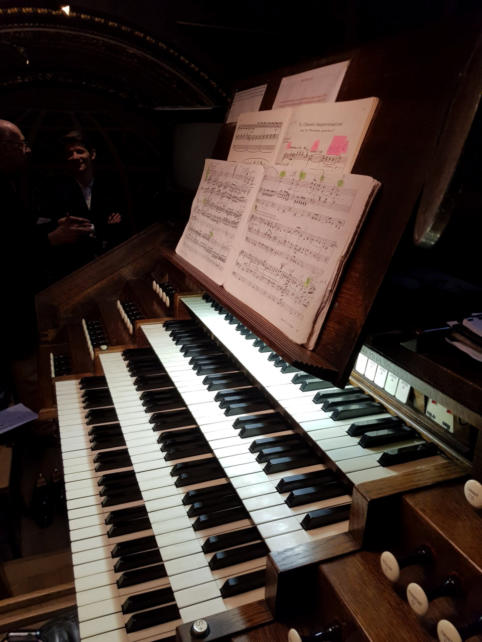
1846 - Cavaillé-Coll (1)
1927 - Mutin (5)
1957 - Roethinger-Boisseau (2)
1971 - Danion-Gonzalez (3a)
1983 - Gonzalez (5)
1988 - Dargassies (5)
2002 - Dargassies (2)
2008 - Dargassies (6)






















